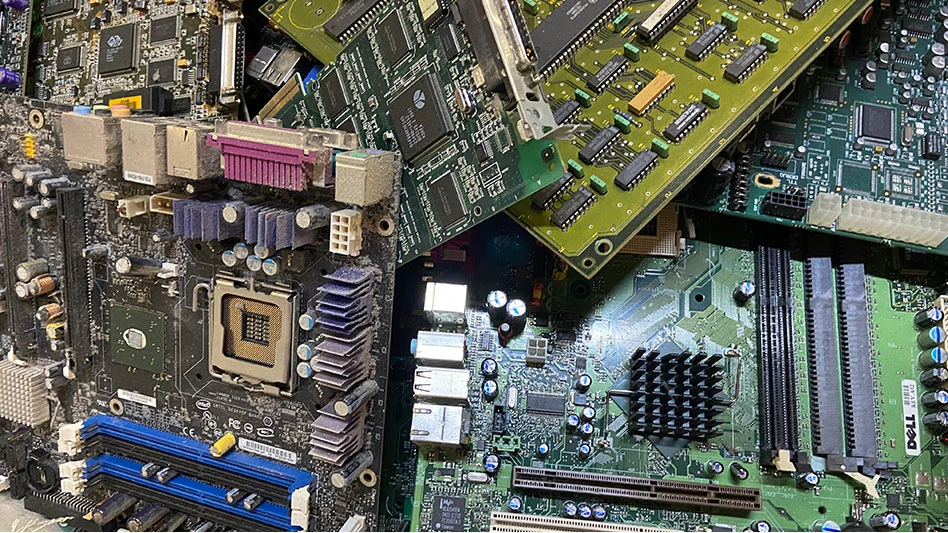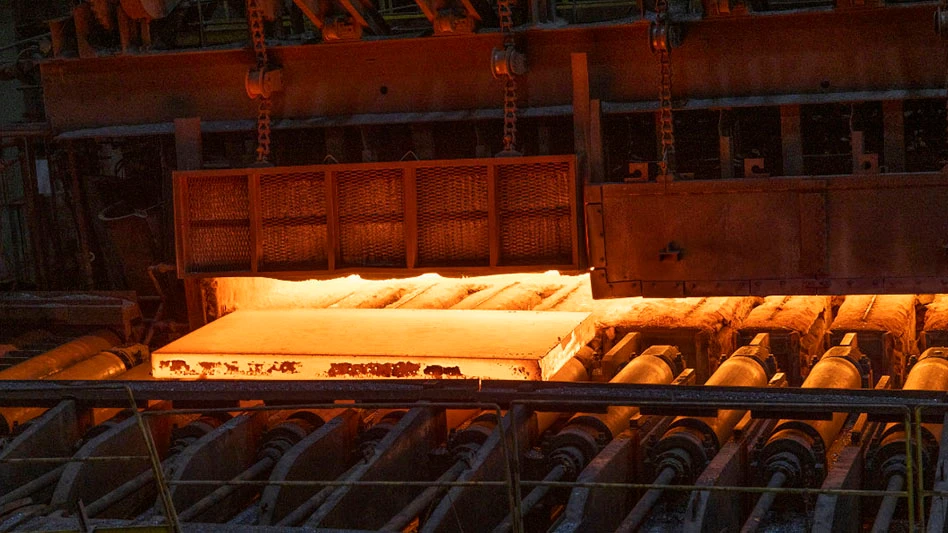If it were a limbo contest, the activity in the titanium market might be interesting, with on-lookers wondering, “How low can you go?” Unfortunately, the industry is dealing with real life, and the question of how low titanium prices can fall before breaking the market’s back has not been resolved.
Similar dramas are being played out not only in titanium, but also for high-temperature nickel-bearing alloys and molybdenum. The situation is made all the more exasperating by fairly robust demand in every case.
“The titanium market is lousy and it won’t get any better in the near future,” says Larry Clark with Commercial Metals, Dallas, Texas. “Until demand improves or the price picture gets better, this will be it.” He is joined by a chorus of others who are looking at an increasingly vexing situation.
“Things are looking pretty weak right now,” agrees Stan Hanen with Seattle Iron and Metals. “Prices are very depressed for titanium.” Although the aircraft business is still doing quite well in the Pacific Northwest, the price of titanium scrap continues to be in the doldrums. A lot of material moved through the past year, and with a glut of imported material on top of the market, prices tanked.
While the turnings market continues to produce scrap, finding a home for it is tough. Higher quality 964 material is not moving, either. Part of the problem is the success of the aircraft market and the amount of scrap that it is developing. Larger supply means lower cost, of course.
Other markets, like the production of golf clubs, are also doing well. Even though production of titanium clubs is helping to eat away some of the surplus, at $250 a club, there is little hope that the duffers of the world are going to spend enough money on clubs to bring titanium supplies down. Use of titanium for equipment used at paper mills also is growing. So the demand is healthy. What is killing the market is a glut of materials.
“The titanium market has a huge scrap surplus,” says Ed Newman, vice president of Keywell in Frewsburg, N.Y. He points to the amount of scrap on the market, the off-shore titanium sponge coming onto the market, and the increase in exports of Russian ingot to the United States, especially during the second half of 1997. The ingot is shipped to the States, processed here, but does not go back to Russia, leaving the scrap to weigh on the market.
“We just have to work through the glut. The price has fallen all year . . . for 12 straight months,” Newman continues. Where 64 turnings were bringing $2.25 at the very start of 1997, today they are selling for $1 or $1.25 if anyone can find a taker.
Ever since the conference two years ago in Reno, when the major players decided to take only the cream of the crop, the market has been depressed, Clark says. “That just devastated people like ourselves,” he continues. Processors and consumers both have restricted their buying.
Commercial Metals has followed suit. Since shipping LTL (less than truckload) is so expensive, they are curtailing their activities, buying only when they can get material at a low price and selling it to the closest buyer they can find. They are handling 15,000 to 20,000 pounds per month, but are not looking for material. “It’s just too hard these days to make money in titanium,” Clark says.
In addition, offshore production of titanium sponge has been eating into the market, adding more supply to an already difficult market.
“Titanium scrap is moving at very low levels. There are few takers of ferro-titanium out there today, and they are buying at such low prices that you can’t afford to handle it,” says Marc Simon of Joseph Simon & Sons, Tacoma, Wash. “It is a very tough situation.” Adding to the problem are the extremely low prices being offered by the few consumers who still are buying. Simon relates that one consumer told him he’d be out of the market at least into 1998 and he did not know how late in the year it would be when he began buying again.
HIGH-TEMP METALS
“From a demand standpoint, the market could not look better for all of the high-temp metals,” says Newman. Nickel-based super-alloy mills are all booked solid. Some are adding capacity. “There is tremendous demand for product,” he continues. However, prices for nickel-bearing scrap are poor.
The problem is that the high-temperature scrap market is not big enough, on its own, to move the nickel market. “We’re just poor cousins of the stainless market,” Newman says. “The high-temp market is a backwards market—we have unbelievable demand, but the prices continue to fall.”
The only hope he sees for an improvement in the scrap price is if the underlying nickel market changes. “If stainless gets busy, and the nickel business gets busy, then prices may pick up,” he says.
The overall nickel market is hurting from a tremendous over-supply and is likely to continue to feel extreme pressure from additional production at least into the early part of the 21st century. “That isn’t all that far away, but in the meantime the marginal companies will have trouble,” says Peter Kuck, nickel specialist with the U.S. Geological Survey.
American Iron and Steel Institute (AISI) figures show nickel-bearing stainless production at 358,347 short tons for the third quarter of 1997, and 1,134,308 tons for the first nine months of 1997. Total stainless production for the same periods was 525,107 tons and 1,617,525, giving a 70.1 percent ratio of nickel-bearing to total stainless. That compares to a total 1996 figure of 1,334,443 short tons for nickel-bearing and a (revised) annual total of 2,061,000 tons stainless for the year, and a 65 percent ratio. Those numbers show that production remains vigorous.
Kuck points to the situation in Russia for much of the oversupply, but credit also is due other areas of the world.
Russia has been shipping lots of nickel to Western Europe and the rest of the world hoping to draw some hard currency into a market which is languishing. Workers are not being paid. Gas bills are way overdue. The country is going through the throes of partial privatization. In addition, all of the scrap from the Russian military-industrial complex is coming onto the market, and nobody—apparently including the Russians—has any idea of just how much material that includes.
The discovery of nickel in the Voisey Bay area in Labrador, Canada, is another major component in the nickel-oversupply story. Two prospectors, under contract to Diamond Fields, were looking for diamonds. Diamond Fields drilled and hit massive nickel. They kept drilling and kept finding more nickel. Inco Ltd., Toronto, bought them out for $3.5 billion. The story alone was enough to cap nickel prices, and the actuality of increased supply assured some price pressure. Meanwhile, the Cubans increased production, as did the Australians.
On the other hand, Korea—a large producer of stainless—is experiencing economic troubles of its own, including bank failures and a rapidly depreciating currency, which are making it difficult for producers. China remains a wild card in the supply-demand equation. In short, uncertainty reigns in the off-shore markets.
“Who knows how long material will flow out of Russia?” asks Jerry Cohen, president of Atlantic Stainless, North Attleboro, Mass. While he remains an active buyer from the Russian mills, he also is buying domestic materials.
“We are purchasing foreign material because the price is lower,” he says. “When we buy domestically it is because of price or because we need the material immediately.” Since orders may be placed for overseas material six months in advance of anticipated use date, there is opportunity for U.S. suppliers to move material at a reasonable price if they can meet a short lead-time to market.
“Consumption is going up,” Kuck says, “but right now supply is going up faster.” He says the market may not come into balance until 2003 or 2005.
“Forget Economics 101. Throw the textbook out the window,” says a scrap buyer from Pittsburgh, Pa. He notes that nickel scrap in the United States is not cheap and credits the current situation to market displacement. He notes that scrap material is available both in the United States and overseas. “We are buying wherever we can get material at the best deal. These days, the globe is a lot smaller than you think.”
Cohen says the market may see higher prices toward the end of 1998. “However, I don’t think there will be any appreciable change,” he notes.
MOLYBDENUM MARKETS
Like titanium, molybdenum has been depressed. “Moly oxides are low, but ferro-moly is holding up,” notes Saul Zenk, president of Monico Alloys, Los Angeles. He credits the downward market to ample stocks on hand at consumer operations. “The result is values have fallen,” he says.
However, he says production of finished product using moly has been quite good. That means stockpiles of scrap are being consumed and that there may be perkier demand soon. “I’m hoping for better things in early 1998,” he says.
Some credit the moly price dip to the typical year-end inventory adjustments. Others say that there were a number of deals cut to move material before the New Year. However, almost everyone sees a brighter future for the market into the Spring. While nobody is predicting prices like the market witnessed two years ago, there is a general feeling that supply-demand will be more in balance and the market’s pricing will be relatively stable. Such projections always bode well, since both the buyer and the seller can be assured of an orderly flow of material to market.
TITANIUM IN 1998
Will the titanium market ever get back on its own two feet? Or will it get whacked by the limbo stick of low prices? “I don’t see it getting any better for quite some time,” Clark says. He predicts poor prices will continue until the market “goes absolutely to hell.” That, he says, is unlikely before the end of next year, perhaps into 1999.
“It is going to take a good increase in price to make people start to sell,” Hanen says. He would like to see the markets move back to late 1996 or even early 1997 levels. However, that is a long way off at the moment.
Simon yearns for the prices of earlier days as well. “But we’re in an over-supply situation and there is not much you can do,” he says.
“I see resumption of titanium scrap purchases later in the first quarter of 1998,” says Monico’s Zenk. “I’m always optimistic.” He bases his opinion on the historic flow of the market, rather than supply-and-demand. He notes that most companies curtail their buying in the fourth quarter. “The market did that for them this year,” he says. “I hope most companies will take a look at their sales forecasts and their present inventory levels and decide there is not enough titanium on hand.”
“I think there is still quite a bit of titanium available and it will continue to effect prices,” Hanen says. “If anything, I see prices weaker into the New Year,” he adds. He says he believes that people are holding material because the price is so low. However, the cutback in shipments has not had any positive impact on the market yet.
There still is a lot of titanium out there, Simon agrees. However, he adds that he is staying away from it unless he can buy it at the right price. “It is hard to move titanium,” he notes.
Agrees Newman, “If you use titanium, you’re going to be all smiles. If you are a scrap processor, it’s a rough year.”
The author is a free-lance writer based in Strongsville, Ohio.

Explore the January 1998 Issue
Check out more from this issue and find your next story to read.
Latest from Recycling Today
- Plastics market turbulence could continue in new year
- EGA Spectro Alloys donates to 30 nonprofits, charitable initiatives
- Signature Systems earns ISO certification
- Poll claims companies worried about future packaging materials shortages
- US EAF mills are running strong: Navigate Commodities
- Survey claims majority of Americans support DRS
- The ESG time trap: How companies fall behind before they ever begin
- Commentary | Recycling: An equation of supply and demand





